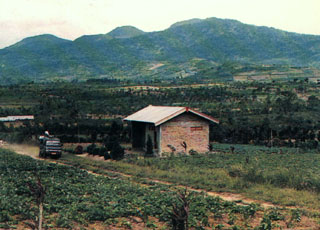Report on Kaba (Indonesia) — December 1979
Scientific Event Alert Network Bulletin, vol. 4, no. 12 (December 1979)
Managing Editor: David Squires.
Kaba (Indonesia) Only solfataric activity accompanies 17 December earthquake
Please cite this report as:
Global Volcanism Program, 1979. Report on Kaba (Indonesia) (Squires, D., ed.). Scientific Event Alert Network Bulletin, 4:12. Smithsonian Institution. https://doi.org/10.5479/si.GVP.SEAN197912-261220
Kaba
Indonesia
3.522°S, 102.615°E; summit elev. 1940 m
All times are local (unless otherwise noted)
Some press reports indicated that increased activity from Kaba and neighboring Bukit Daun volcanoes preceded a destructive 17 December earthquake. Adjat Sudradjat and Suparto Siswowidjoyo report that no unusual volcanic activity took place. Thick white solfataric vapor was emitted from two craters (Kaba Lama and Kaba Besar) on Kaba, which last erupted in 1956. Temperatures of solfataras and a crater lake at Kaba were measured on several occasions in the past nine years (table 1). Active fumaroles are present on Bukit Daun, but the volcano has not erupted in historic time.
Table 1. Temperatures of solfataras and a crater lake at Kaba, 1971, 1976, and 1978. Courtesy of VSI.
| Area | 1971 | 1976 | 1978 |
| Solfataras | 110°C | 156°C | 123°C |
| Crater Lake | 45°C | -- | 34°C |
Geological Summary. Kaba, a twin volcano with Mount Hitam, has an elongated summit crater complex dominated by three large historically active craters trending ENE from the summit to the upper NE flank. The SW-most crater of Gunung Kaba, named Hidup (or Lama), is the largest. Most historical eruptions have affected only the summit area. They mostly originated from the central summit craters, although the upper-NE flank crater Kawah Vogelsang also produced explosions during the 19th and 20th centuries.
Information Contacts: A. Sudradjat, VSI; Suparto S., Java and Sumatra Observatory, VSI.

